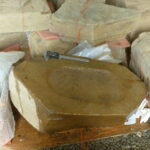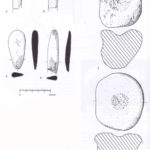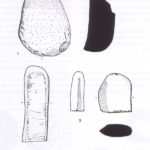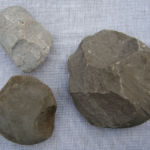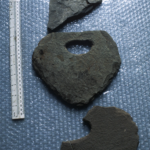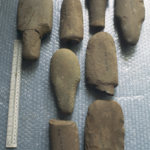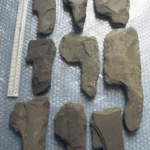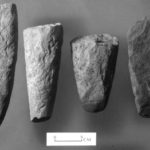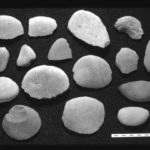At Ness of Brodgar rocks from sedimentary, igneous and metamorphic sources were worked to produce a wide range of different artefact types by flaking, pecking, grinding and polishing. Alongside distinctive and sometimes elaborate axeheads, pillow stones, maceheads, and spatulate forms, the assemblage contains many tools that are the product of working and shaping other artefacts and processing different materials. These tools are central to our understanding of how the site was occupied: the nature and organisation of activities and the extent of links with other Neolithic sites in Orkney.
The large assemblage from the Ness of Brodgar contains numerous different tool types, several of which have not previously been recognised, or else are scarce, at other Neolithic sites in Orkney. In all, a total of 1205 stone artefacts have been recorded from the 2004-2019 excavation seasons.
Read more here: Ann Clarke, 2020 Stone Tools from Ness of Brodgar in N. Card, M. Edmonds and A. Mitchell (eds) The Ness of Brodgar: As it Stands. 224-243.
